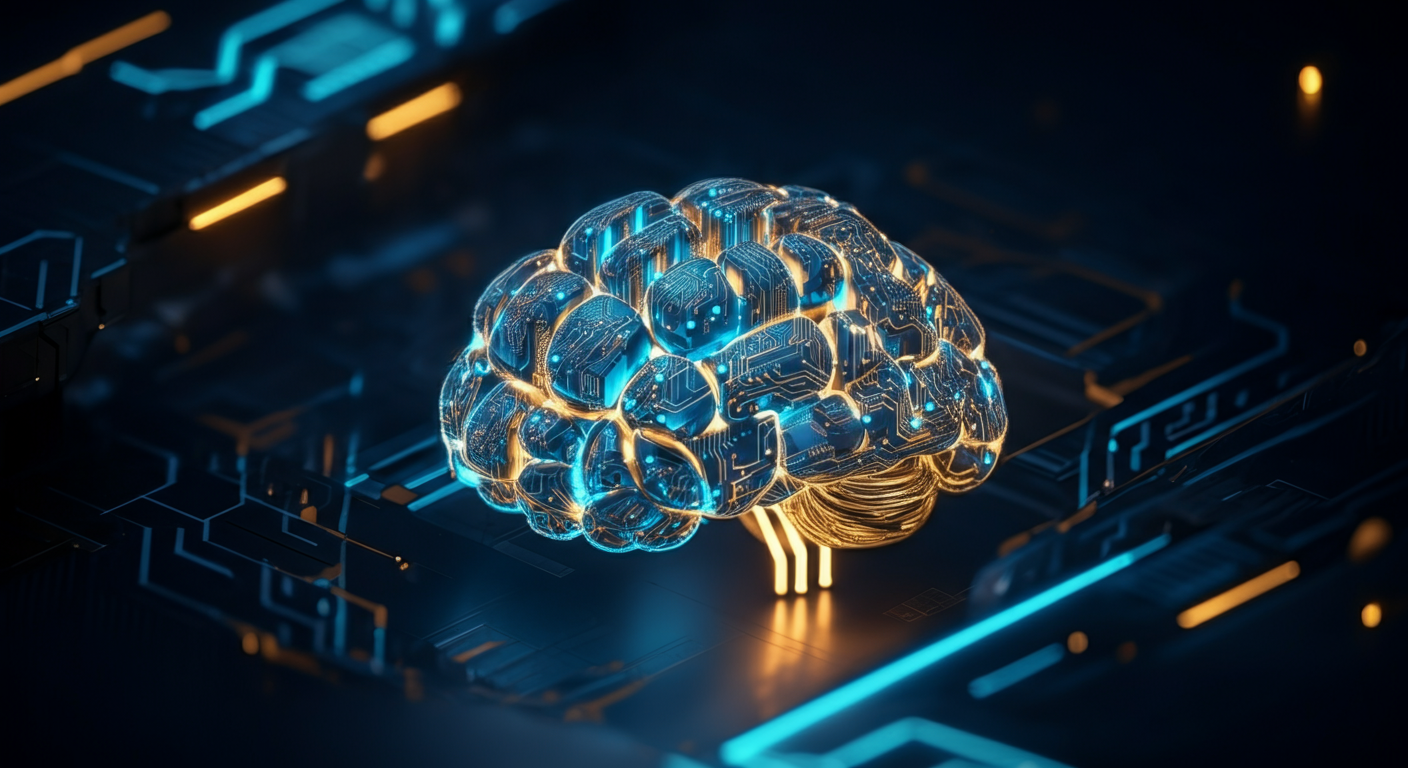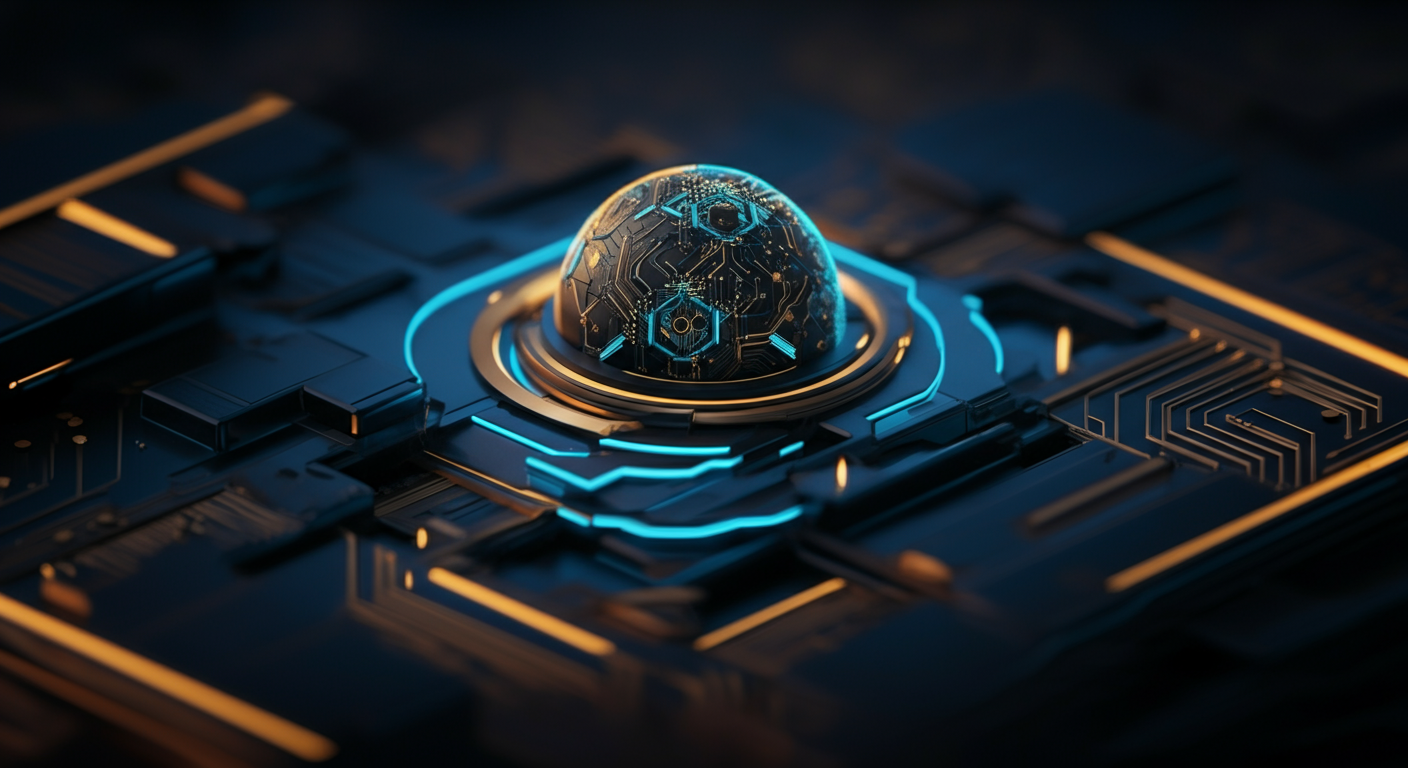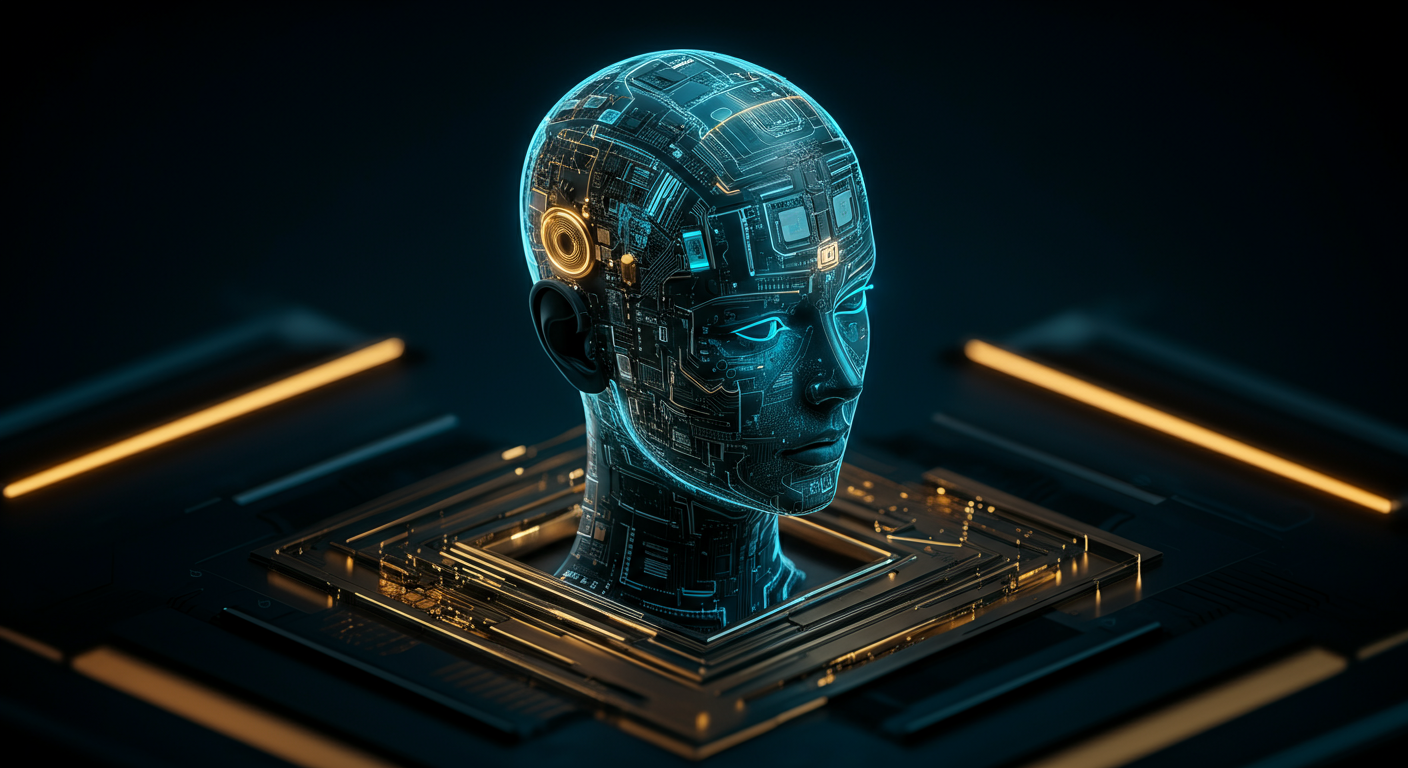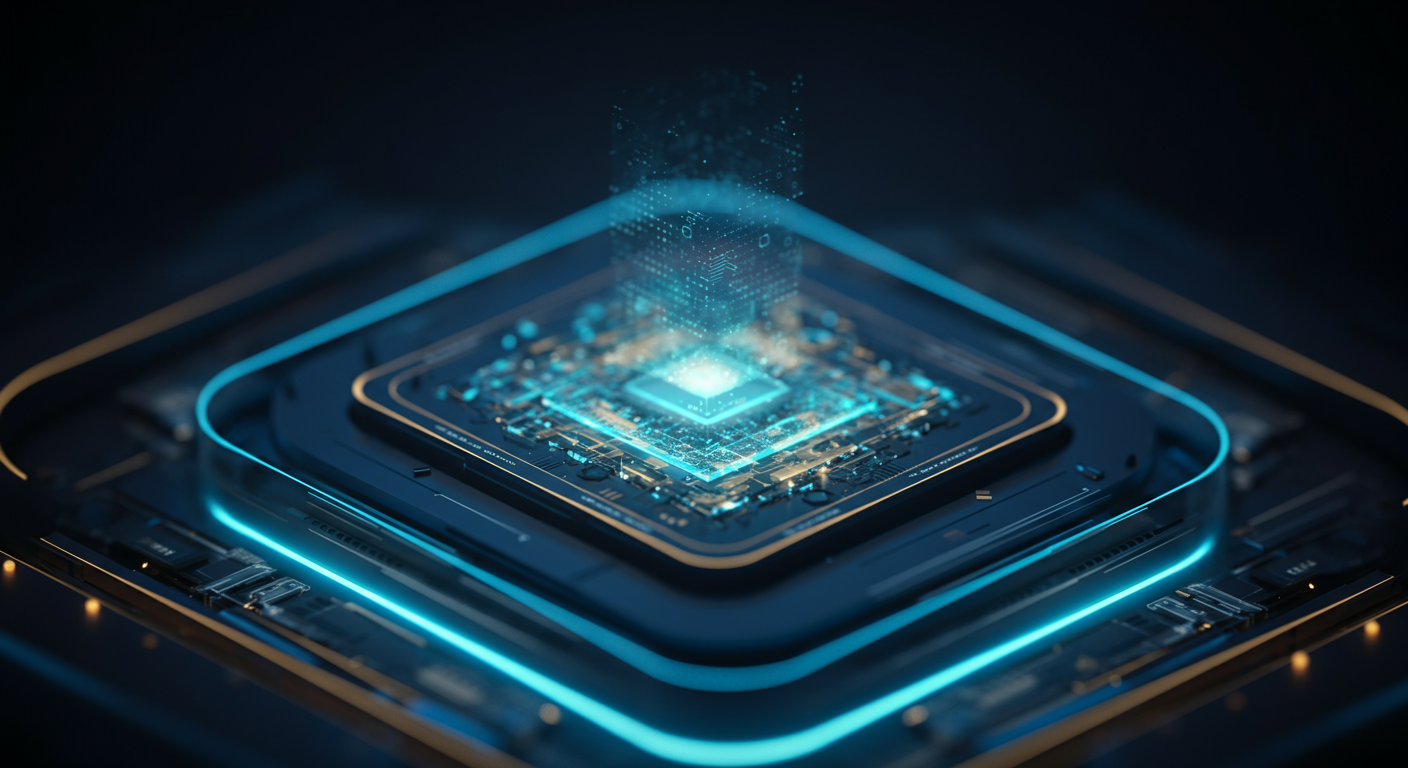AI Networking: Building Intelligent Connections in the Age of Real-Time Data

The Evolution of Networking: From Packets to Predictions
Networking has undergone a dramatic transformation, and AI is now at the forefront, fundamentally altering how we think about intelligent connections. What started with basic packet switching is evolving into a realm of real-time data analysis and proactive network management.
Key Milestones in Network Evolution
- Early networking focused on basic connectivity and data transfer.
- The rise of the internet brought about standardized protocols and widespread accessibility.
- Cloud computing centralized resources, demanding more dynamic network management.
- Now, AI is enabling networks to anticipate and adapt to changing conditions.
AI-Driven Networking: A Paradigm Shift
- AI algorithms are used to analyze network traffic in real-time, identifying bottlenecks and potential security threats. Cybersecurity Copilots, Open Source Science, and the 250M Talent War are increasingly relying on AI to proactively defend against cyberattacks.
- Predictive maintenance uses machine learning to forecast equipment failures, reducing downtime and improving resource allocation. This is a proactive approach, where AI is used to maintain the infrastructure.
- AI is optimizing routing protocols dynamically, directing traffic to less congested paths for better performance.
The Importance of Low-Latency and High-Bandwidth
- AI applications, especially those involving real-time data processing (like autonomous vehicles or financial trading), demand extremely low latency.
- High bandwidth is essential for transmitting the massive datasets required by AI training and inference.
- Innovations such as LFM2-Audio: Exploring the Potential of Liquid AI's Low-Latency Audio Foundation Model are critical to reducing latency.
AI is rewriting the rules of network management in real time.
AI Algorithms: The Brains Behind Optimization
Forget static configurations; AI algorithms like reinforcement learning and neural networks are the new architects of efficient networks.Reinforcement learning, in particular, allows networks to "learn" optimal strategies through trial and error, adapting to ever-changing conditions.
- Reinforcement Learning: Networks "learn" by receiving feedback (rewards/penalties) for their actions, gradually optimizing their behavior over time.
- Neural Networks: Complex algorithms inspired by the human brain, capable of recognizing patterns and making predictions, essential for anticipating network demands.
- Example: Imagine a self-driving car navigating traffic; similarly, AI steers data packets through the most efficient network paths.
Dynamic Resource Allocation: The Art of Real-Time Adjustment
AI's ability to analyze data in real-time is transforming how networks allocate resources. Instead of relying on static rules, AI dynamically adjusts bandwidth, computing power, and storage based on immediate demand.- Predictive Analysis: AI forecasts traffic spikes and proactively allocates resources to prevent bottlenecks.
- Automated Scaling: AI can trigger automatic scaling of resources in the cloud, ensuring applications always have the necessary bandwidth and processing power.
Automated Configuration and Troubleshooting: Self-Healing Networks
AI simplifies network management through automation. Think of it as a tireless, always-on engineer.- Automated Configuration: AI can automatically configure network devices based on predefined policies and real-time conditions.
- Automated Troubleshooting: AI can identify and diagnose network issues, often resolving them before they impact users.
- Example: Bugster AI is an example of a tool that automates bug detection, decreasing network disruptions.
Use Cases: AI in Action
- Data Center Optimization: Maximizing efficiency and minimizing latency in data centers.
- Wireless Network Performance: Improving signal strength and reducing interference in wireless networks.
- IoT Connectivity Management: Managing the massive influx of data from IoT devices, ensuring seamless connectivity.
Real-time data is the lifeblood of modern AI networking, providing the freshest insights for training and enabling lightning-fast decision-making.
Real-Time Data: The Fuel for Intelligent Networks
Without up-to-the-minute data, AI models are stuck in the past, like using a map from 1925 to navigate 2025 Los Angeles.- Crucial for training AI models, real-time data ensures models adapt to changing network conditions. Think of it as feeding your AI a constant stream of reality.
- Needed for effective AI deployment, enabling models to make immediate decisions based on current network traffic.
- ChatGPT, for example, can provide immediate responses to questions because it is trained on vast amounts of recent data.
- Without current insights, even the most sophisticated AI can fail.
Challenges in Processing Real-Time Data
Handling the sheer volume and velocity of real-time network data is no small feat.- Processing massive data streams requires powerful and scalable infrastructure. It's like trying to drink from a firehose – you need serious capacity.
- Analyzing data streams demands algorithms capable of filtering noise and extracting meaningful insights with minimal delay.
AI's Role in Anomaly Detection
AI's pattern-recognition capabilities are invaluable for cybersecurity.- AI algorithms excel at identifying deviations from normal network behavior, flagging potential security threats in real time.
- By learning typical traffic patterns, AI can detect anomalies that might indicate intrusions, malware, or other malicious activities.
- For instance, anomaly detection is critical in multi-agent systems for cyber defense as discussed in this article.
Ethical Considerations
With great power comes great responsibility.- Monitoring and analyzing network data raises serious privacy concerns. Anonymization and data minimization techniques are essential.
- Transparency in AI decision-making is crucial to ensure accountability and prevent bias.
One of the most crucial applications of AI in networking lies in fortifying digital defenses.
Enhancing Threat Detection and Prevention
AI drastically improves network security by learning patterns of normal network behavior. This allows for rapid detection of anomalies and potential threats far quicker than traditional methods. For example, AI in practice can analyze network traffic in real-time to identify unusual data flows indicative of a malware infection or a data exfiltration attempt.AI-Powered Intrusion Detection and Prevention Systems (IDPS)
"AI-driven IDPS can analyze network data at speeds and scales previously unimaginable, allowing for the identification and neutralization of threats in real-time."
- Traditional IDPS rely on predefined rules and signatures, making them vulnerable to zero-day exploits.
- AI-powered IDPS use machine learning to adapt to new threats dynamically.
- These systems can identify subtle indicators of compromise that humans or rule-based systems might miss.
Automating Security Incident Response and Remediation
Manual incident response is time-consuming and prone to human error. AI can automate key steps in this process:- Incident Triaging: AI can automatically analyze alerts and prioritize those that pose the greatest risk.
- Containment: AI can isolate infected systems or block malicious traffic, preventing further damage.
- Remediation: AI can recommend or automatically implement fixes, such as patching vulnerabilities or removing malware.
Addressing Adversarial Attacks on AI-Powered Security Systems
Like any technology, AI network security isn't foolproof. Adversaries are actively developing techniques to evade or manipulate AI-powered security systems:- Adversarial Examples: Crafting inputs designed to fool AI models.
- Model Poisoning: Injecting malicious data into training sets to degrade performance.
- Evasion Techniques: Altering attack patterns to avoid detection.
In summary, AI offers unprecedented capabilities for enhancing network security, though understanding and mitigating potential vulnerabilities remains essential for building resilient defenses. As AI continues to evolve, so too must our approaches to protecting our digital infrastructure.
Harnessing the full potential of AI-powered networking requires a robust foundation of both hardware and software.
AI Networking Hardware: The Muscle
- GPUs: Graphics Processing Units are crucial for parallel processing, accelerating AI workloads like deep learning used in network analytics. They handle the massive matrix operations needed for AI algorithms. Consider them the specialized weightlifters of the processor world.
- Specialized ASICs: Application-Specific Integrated Circuits are custom-designed chips tailored for specific AI tasks, like network intrusion detection or traffic optimization. > For example, some vendors are developing ASICs optimized for TensorFlow or PyTorch, enhancing efficiency.
- High-Performance Memory: AI algorithms require fast access to large datasets. High-bandwidth memory (HBM) and other advanced memory technologies are key to minimizing latency and maximizing throughput.
AI Networking Software: The Brains

- Software Platforms and Frameworks: TensorFlow and PyTorch are leading frameworks for developing and deploying AI models in network management. These provide the tools and abstractions needed to build sophisticated AI-driven solutions.
- Network Management Platforms: These platforms integrate AI algorithms for tasks like dynamic routing, anomaly detection, and resource allocation. Think of them as mission control for your network, powered by AI.
- Open-Source Tools: The open-source community plays a vital role, fostering innovation through shared tools, algorithms, and datasets. This collaborative approach drives down costs and accelerates the development of new AI networking solutions. You can find a lot of valuable things for this area by using an AI Tool Directory.
Integration Challenges
Integrating AI into existing network infrastructure isn't always smooth sailing, as it is important to test everything before deployment. Legacy systems, data silos, and security concerns can pose significant hurdles.
- Legacy Compatibility: Ensuring AI solutions can seamlessly interoperate with existing network hardware and software is essential.
- Data Integration: Consolidating and preparing network data for AI consumption requires robust data pipelines and transformation tools.
- Security: Protecting AI models and data from adversarial attacks and ensuring data privacy are paramount.
Here's how AI is set to revolutionize networking, moving past mere automation into a realm of intelligent adaptability.
Federated Learning: Collaboration Without Compromise
Federated learning in networking allows AI models to be trained collaboratively across numerous devices or servers, all without exchanging the raw data. Imagine hospitals across the country refining a diagnostic AI, using patient data to improve accuracy while fully protecting patient privacy. It's a game-changer for sensitive sectors.Self-Healing and Self-Optimizing Networks
AI can analyze network performance in real-time and dynamically adjust resources for optimal efficiency and resilience.- Self-healing: Identifies and resolves issues automatically, minimizing downtime.
- Self-optimizing: Adapts to changing traffic patterns, ensuring consistent performance.
Scaling AI-Powered Networks
Managing AI-driven networks at scale poses significant orchestration challenges.- Resource allocation: Efficiently distributing computing and storage resources.
- Model deployment: Streamlining the deployment and updating of AI models across the network.
- Monitoring and governance: Implementing robust monitoring and governance frameworks to ensure reliability and compliance.
Applications in Emerging Fields
AI networking is poised to transform industries like autonomous vehicles and smart cities.- Autonomous Vehicles: Enabling seamless communication between vehicles, improving safety and traffic flow.
- Smart Cities: Optimizing resource allocation, enhancing public safety, and creating more sustainable urban environments.
Here's how AI is connecting the dots, literally, in the world of networking.
Case Studies: Real-World Applications of AI in Networking

AI isn't just a buzzword; it's transforming how networks operate, offering improvements in efficiency, security, and cost savings. Let's dive into some concrete examples:
- Edge Computing Optimization: Imagine a smart city where streetlights adjust in real-time based on traffic. Companies are using AI to optimize edge computing resources, ensuring that data processing happens closer to the source, reducing latency, and improving responsiveness. This is especially relevant as edge computing becomes more prevalent; you can explore related tools on our Design AI Tools page.
- 6G Network Management: As we move towards 6G, the complexity of managing wireless networks increases exponentially. AI is being deployed to predict network congestion, optimize resource allocation, and self-heal networks, ensuring seamless connectivity and performance, which can be explained using ai glossary.
- Private Network Security: Organizations are increasingly relying on private networks for enhanced security and control. AI-powered threat detection systems analyze network traffic patterns, identify anomalies, and automatically respond to potential security breaches, safeguarding sensitive data. This technology is particularly vital for Software Developer Tools handling sensitive information.
- Key Metrics and KPIs: Companies are tracking metrics like reduced latency, improved network uptime, and decreased security incidents to quantify the benefits of AI networking. These KPIs demonstrate a clear return on investment and validate the effectiveness of AI solutions.
Intelligent Connections
These case studies highlight how AI is enabling smarter, more resilient, and efficient networks. From optimizing edge computing to securing private networks, AI is proving to be a critical tool for organizations seeking to stay ahead in the age of real-time data, which explains why it's important to have a Guide to Finding the Best AI Tool Directory.
Keywords
AI networking, intelligent networks, real-time data, network optimization, network security, machine learning, deep learning, predictive networking, autonomous networks, AI-driven infrastructure, federated learning networks, self-healing networks, AI-powered network management, real-time data AI, ethical AI networking
Hashtags
#AINetworking #IntelligentNetworks #RealTimeAI #NetworkOptimization #AISecurity
Recommended AI tools

Your AI assistant for conversation, research, and productivity—now with apps and advanced voice features.

Bring your ideas to life: create realistic videos from text, images, or video with AI-powered Sora.

Your everyday Google AI assistant for creativity, research, and productivity

Accurate answers, powered by AI.

Open-weight, efficient AI models for advanced reasoning and research.

Generate on-brand AI images from text, sketches, or photos—fast, realistic, and ready for commercial use.
About the Author

Written by
Dr. William Bobos
Dr. William Bobos (known as 'Dr. Bob') is a long-time AI expert focused on practical evaluations of AI tools and frameworks. He frequently tests new releases, reads academic papers, and tracks industry news to translate breakthroughs into real-world use. At Best AI Tools, he curates clear, actionable insights for builders, researchers, and decision-makers.
More from Dr.

